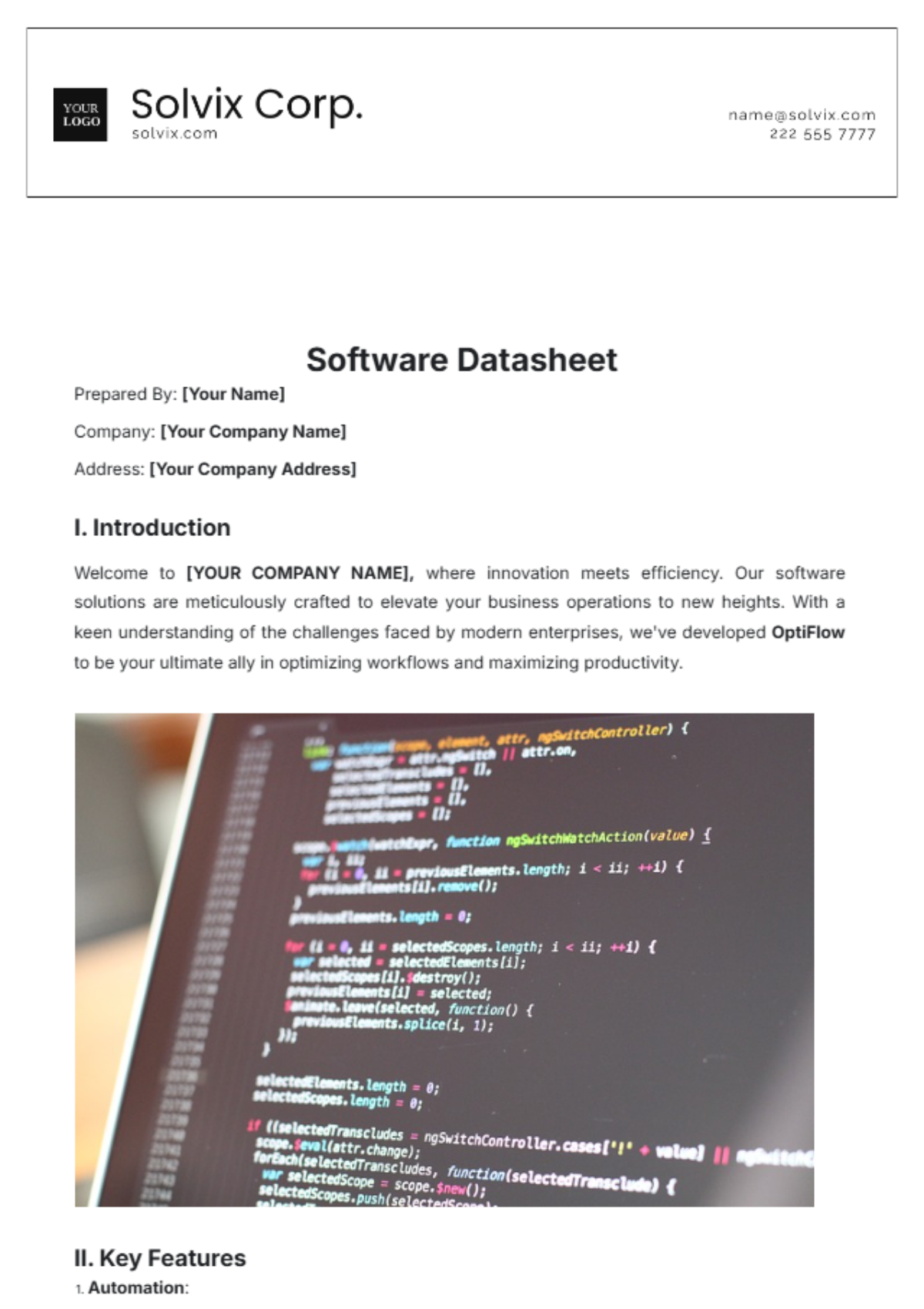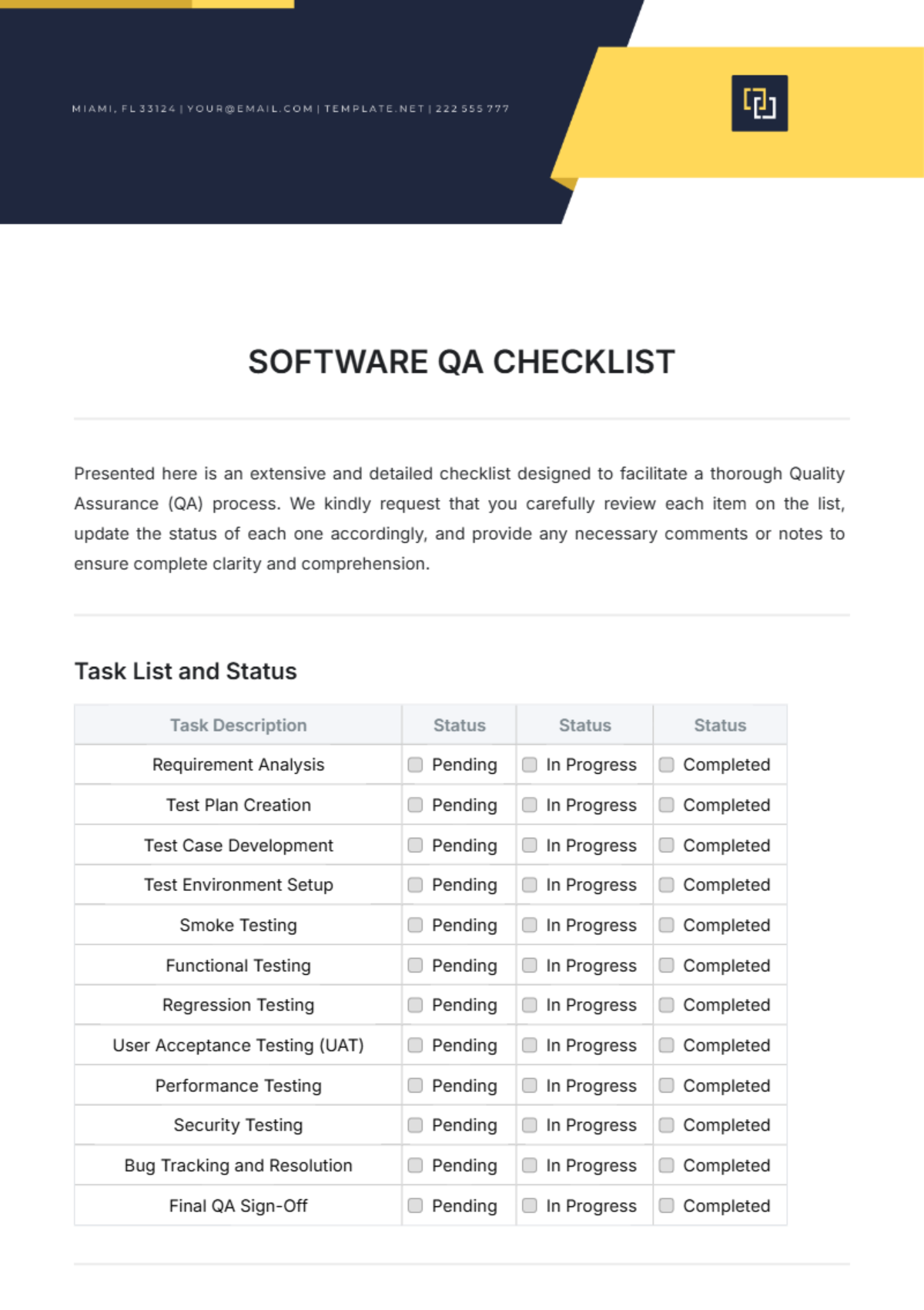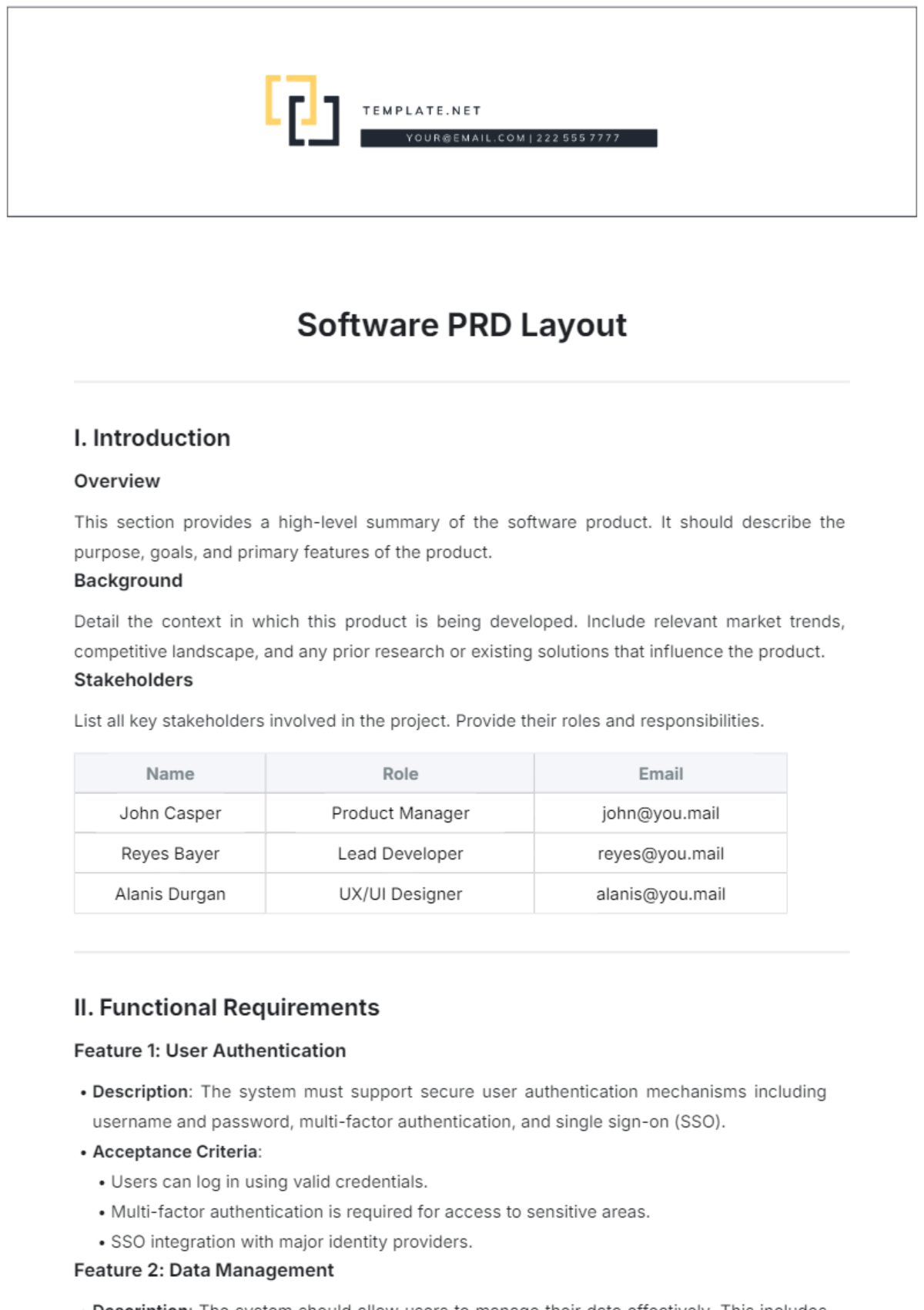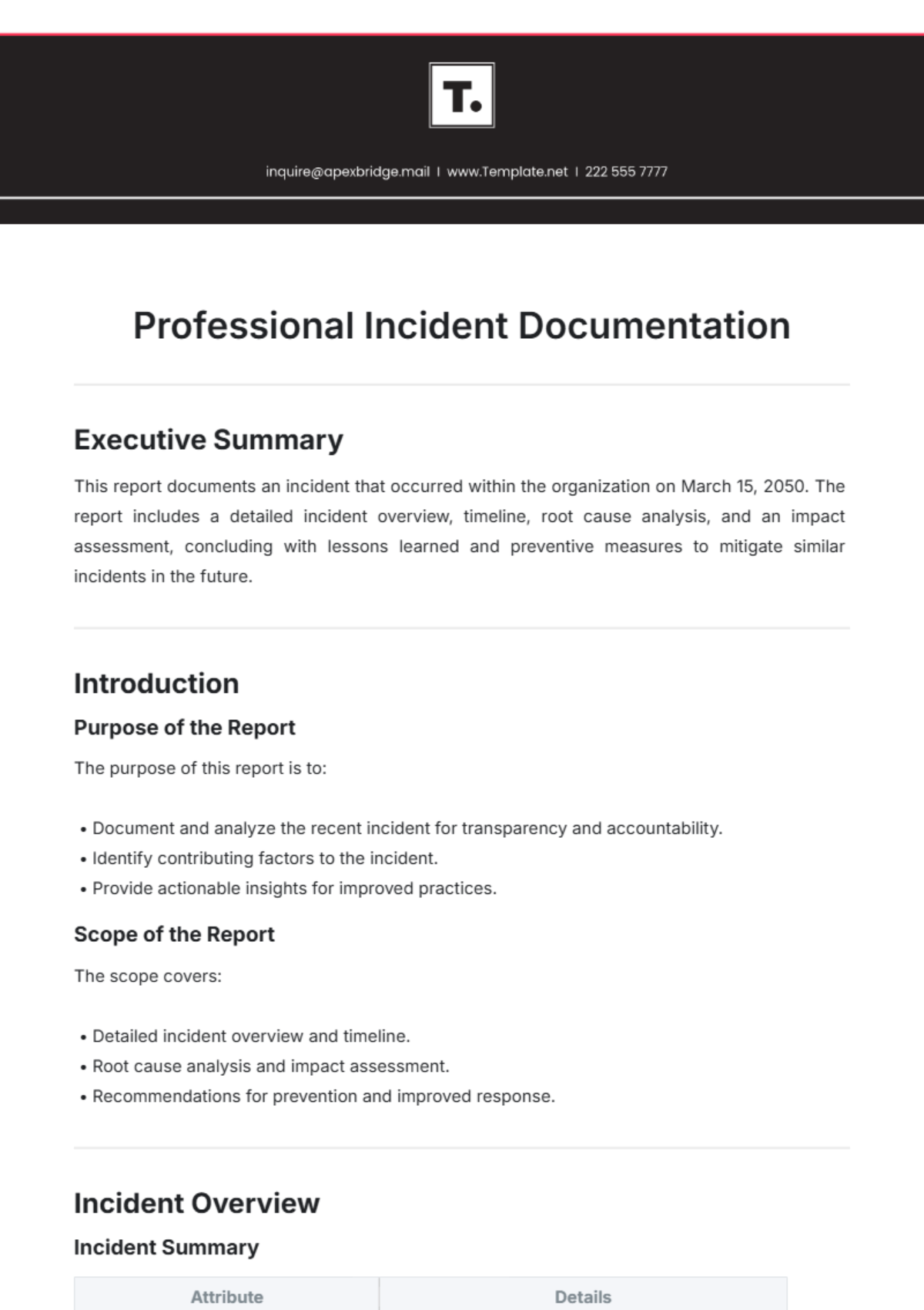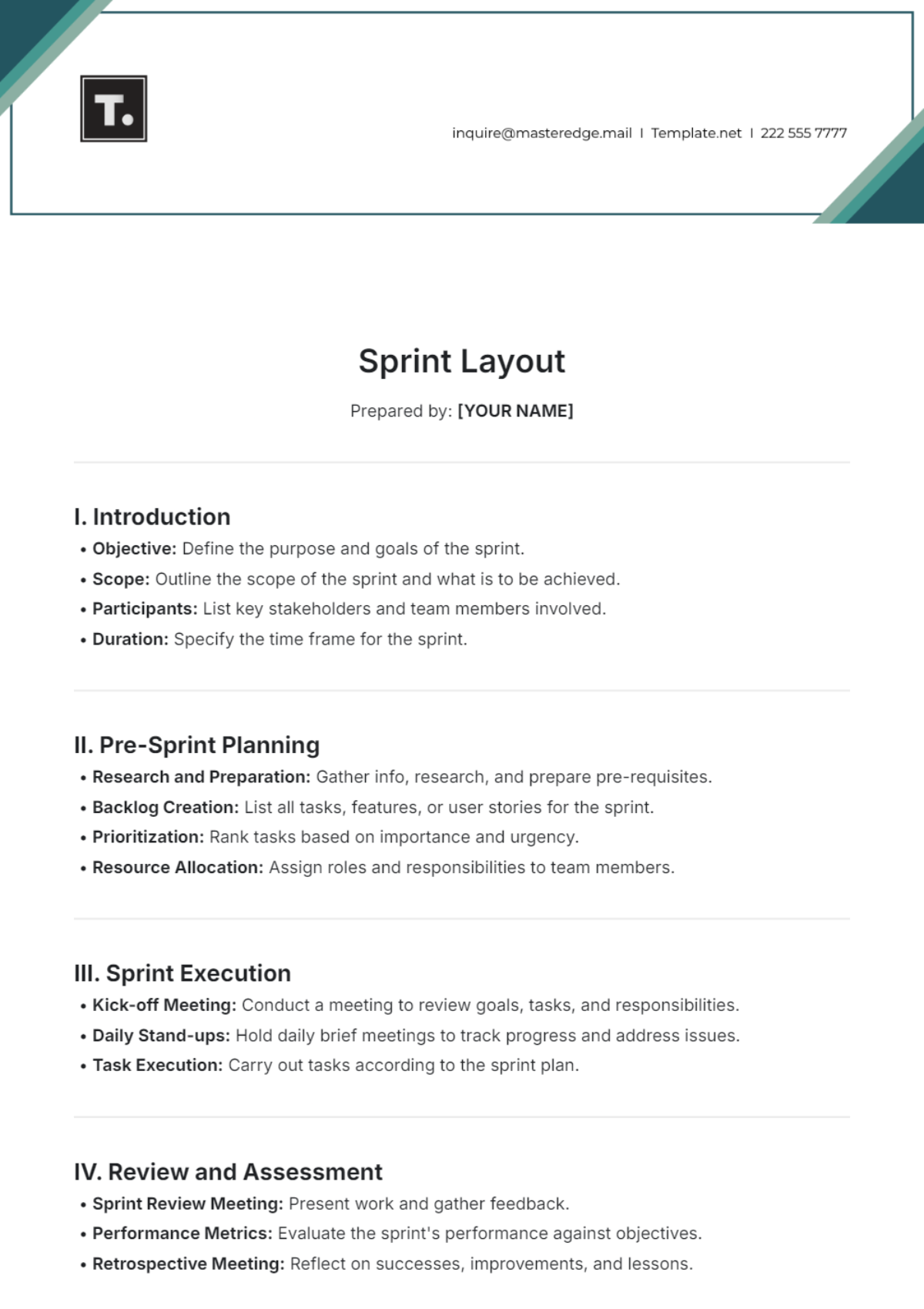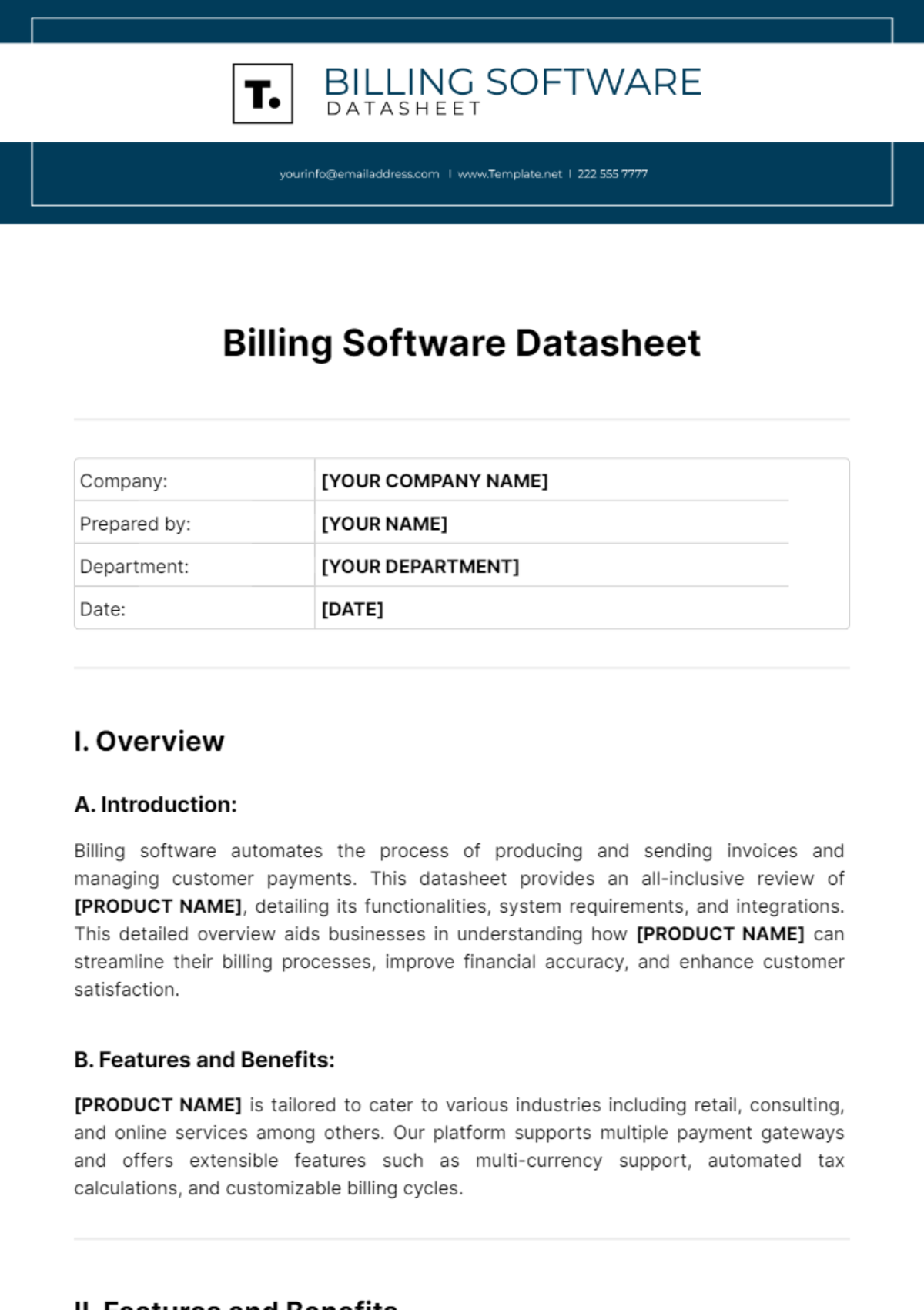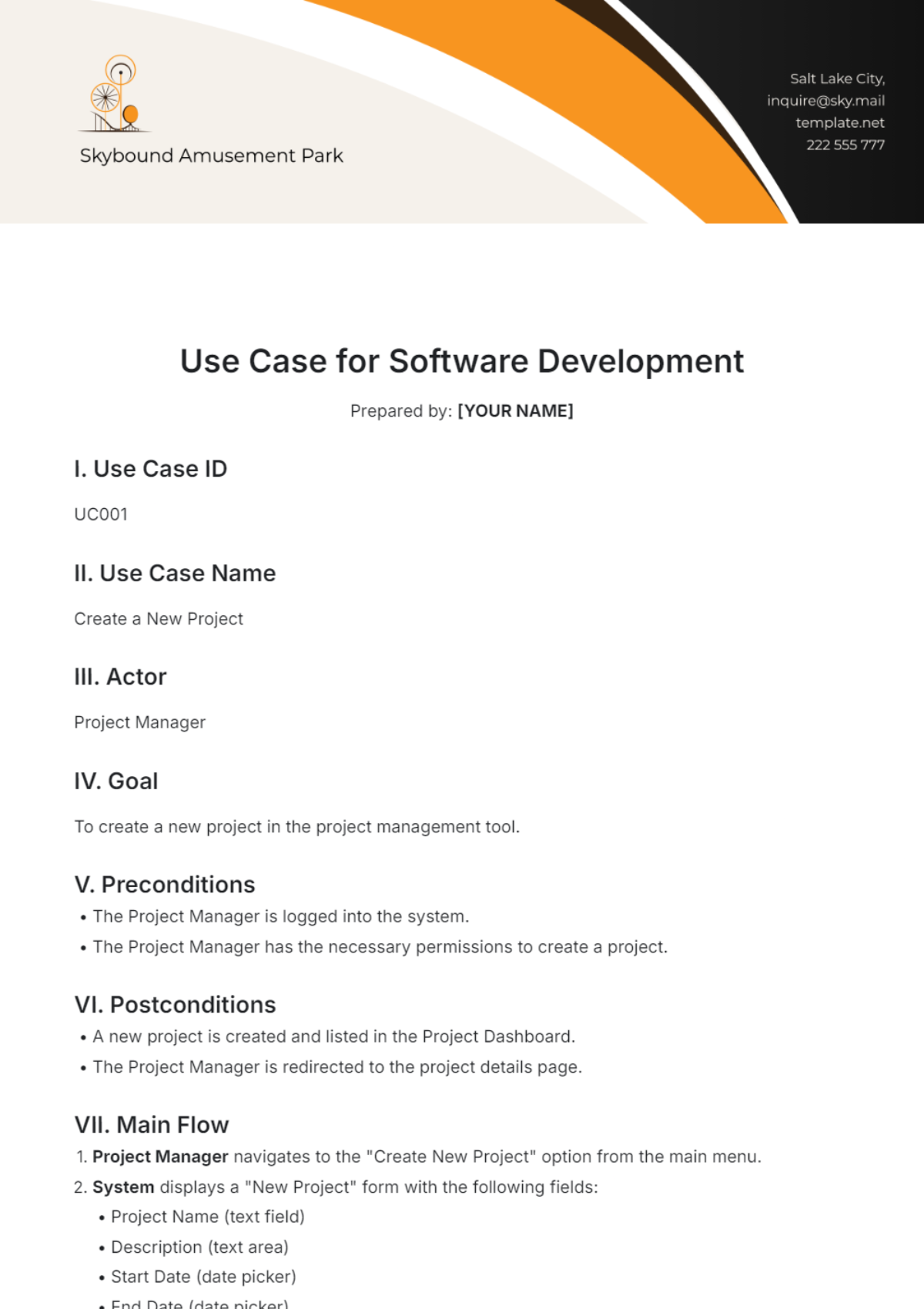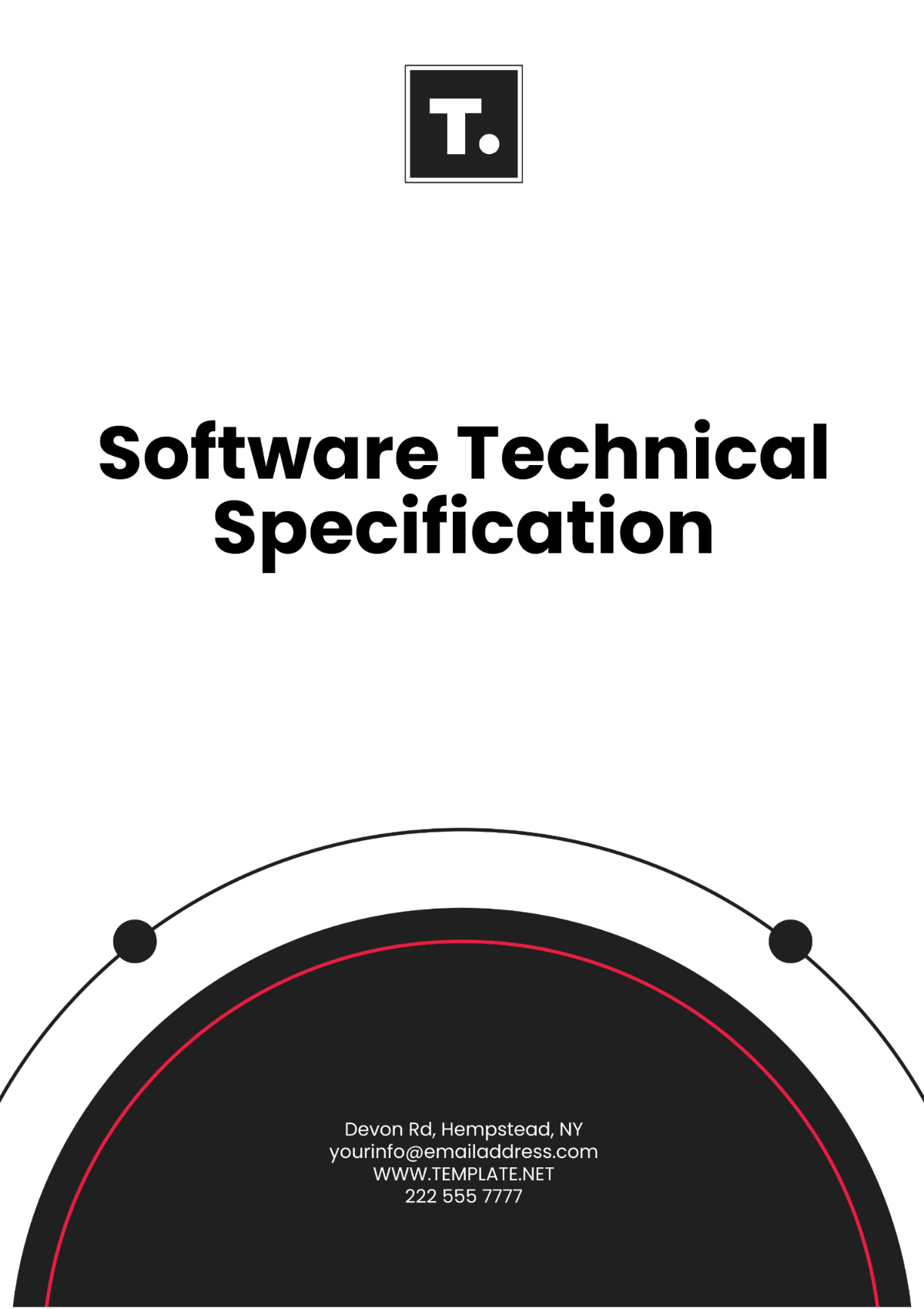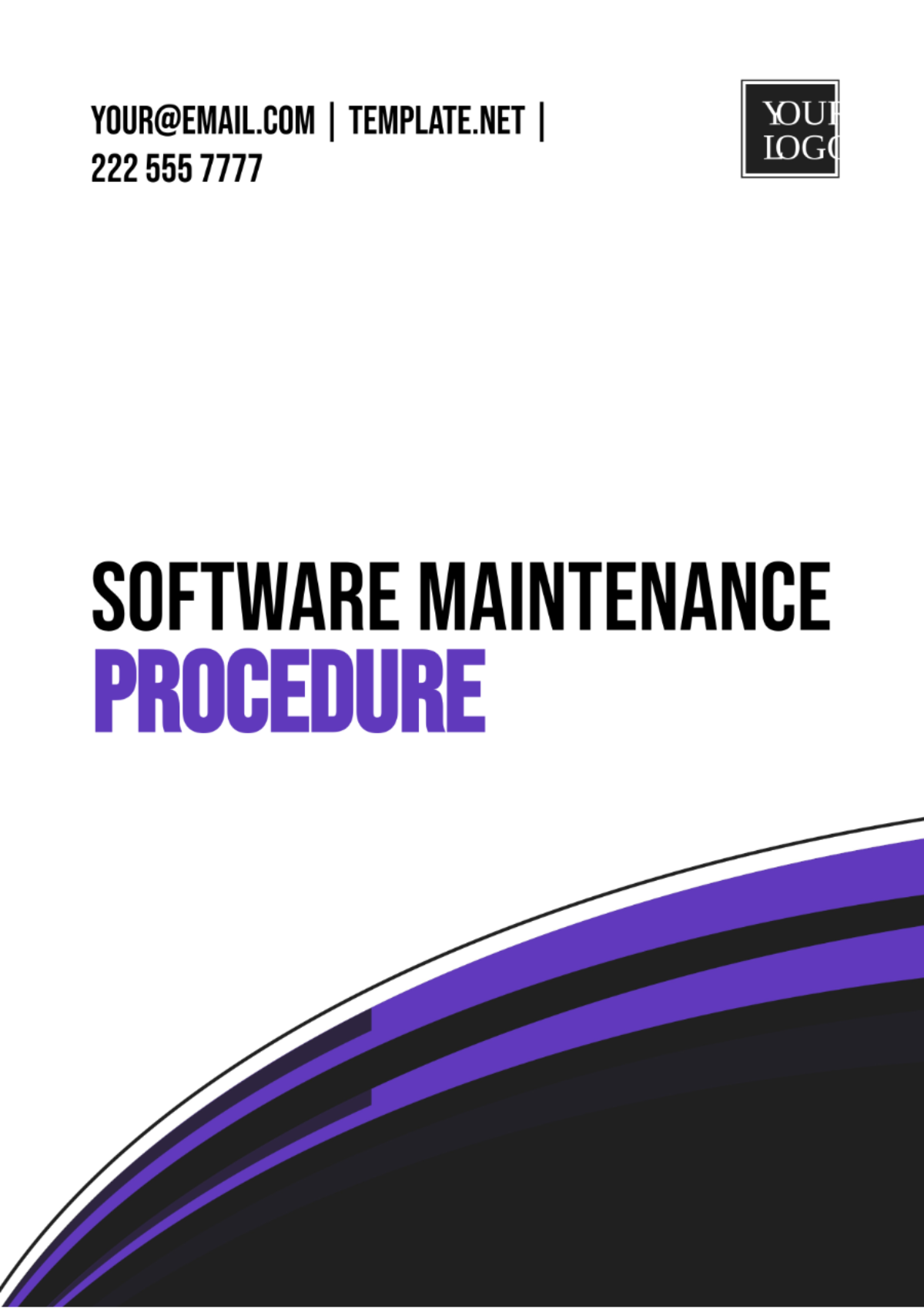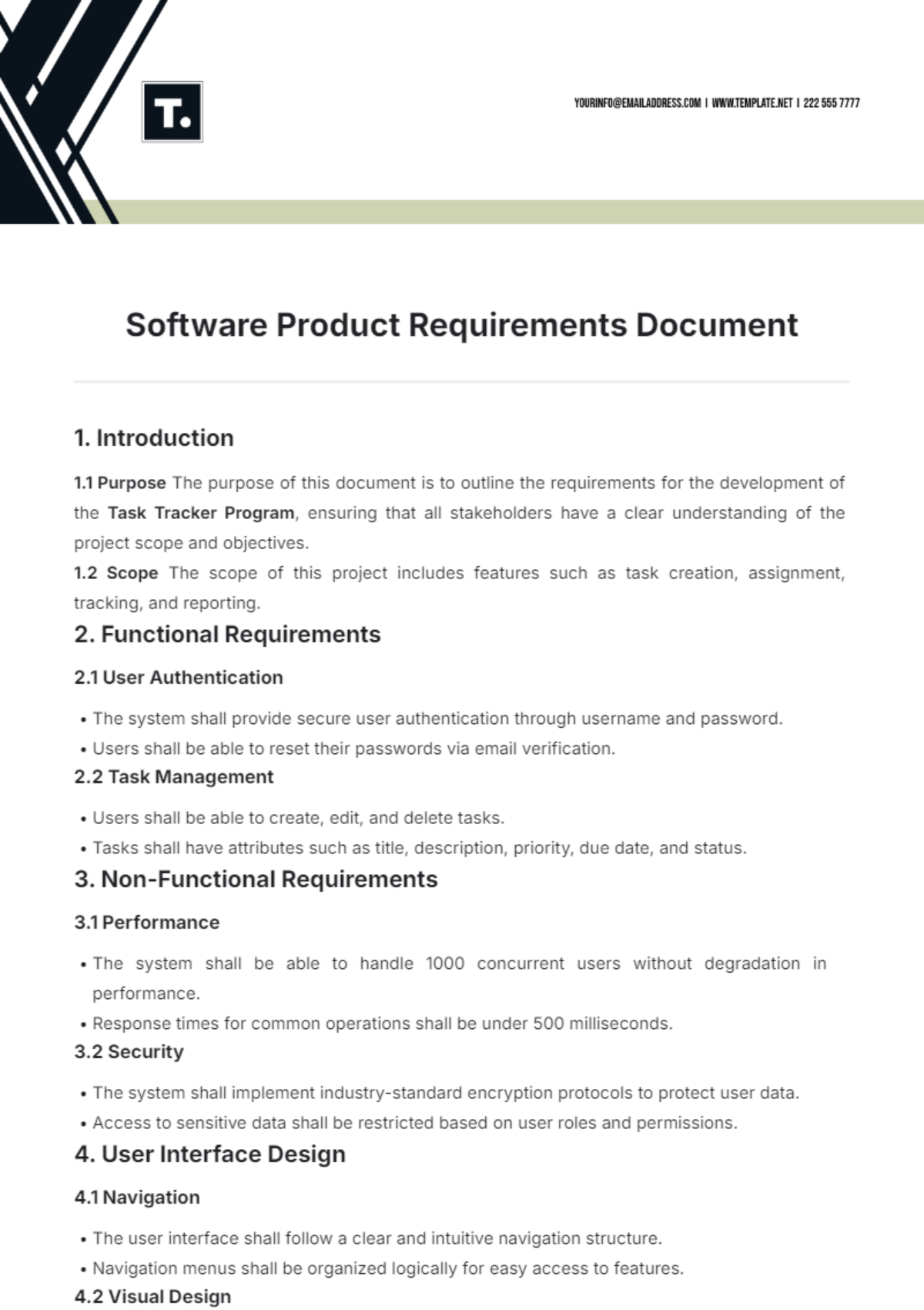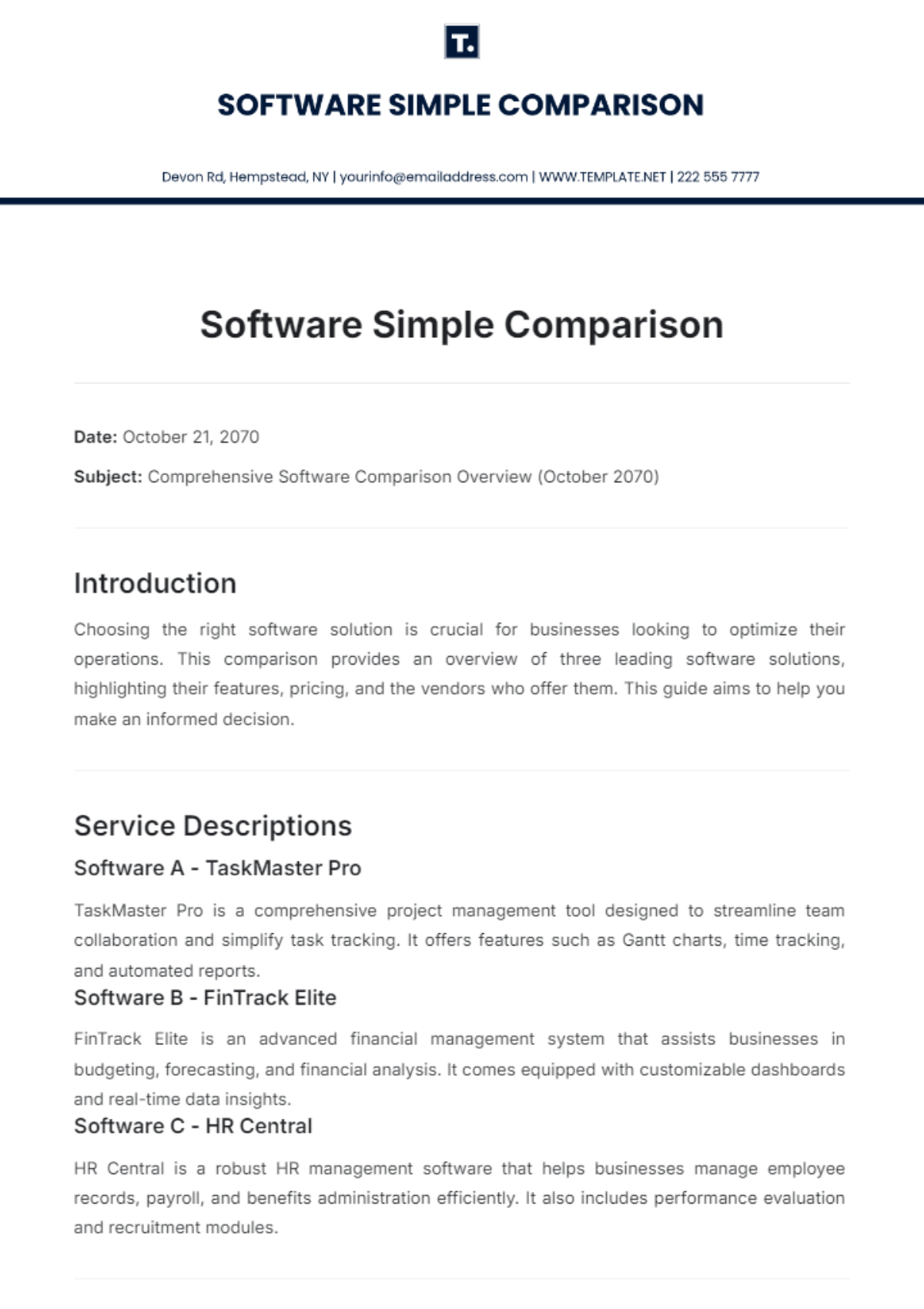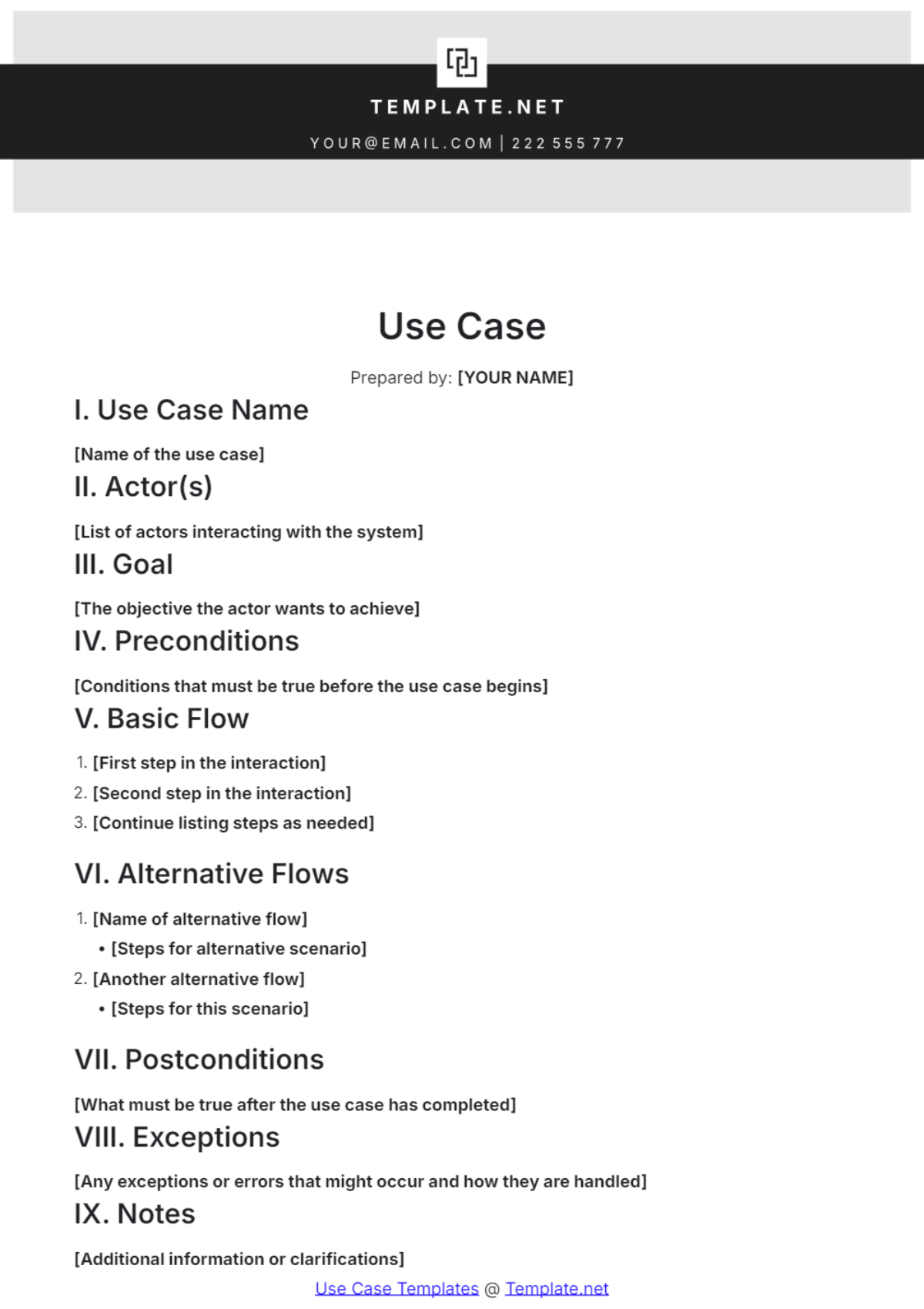Software Deployment Methodology
Prepared by: [Your Name]
Date: [Date]
1. Introduction
The Software Deployment Methodology outlines the structured approach for deploying software applications into production environments. This methodology ensures that deployments are executed efficiently, with minimal disruption and maximum reliability. It covers planning, execution, and post-deployment activities, aiming to deliver a seamless transition from development to operational use.
2. Deployment Plan
2.1 Objectives
Ensure successful deployment of software applications.
Minimize downtime and disruptions to end-users.
Facilitate a smooth transition from staging to production.
2.2 Scope
Deployment of new software applications.
Updates and upgrades to existing systems.
Migration of software across different environments.
2.3 Stakeholders
Development Team: Responsible for preparing the software for deployment.
IT Operations Team: Manages the deployment process and infrastructure.
Quality Assurance Team: Ensures the software meets quality standards before deployment.
Project Manager: Oversees the deployment process and coordinates between teams.
3. Roles and Responsibilities
3.1 Deployment Team
Deployment Lead: Coordinates the overall deployment process, manages schedules and ensures adherence to methodology.
Deployment Engineers: Execute the deployment tasks, including installation and configuration.
System Administrators: Handle server setup and environment configuration.
3.2 Support Team
Technical Support: Provides assistance and troubleshooting during and after deployment.
End-User Support: Addresses issues and provides help to end-users post-deployment.
4. Pre-Deployment Activities
4.1 Preparation
Software Packaging: Ensure the software is properly packaged for deployment.
Environment Setup: Prepare the target environment, including server configuration and network settings.
Backup: Create backups of existing systems and data to prevent data loss in case of deployment issues.
4.2 Testing
Pre-Deployment Testing: Conduct thorough testing in a staging environment to identify and resolve issues.
User Acceptance Testing (UAT): Allow end-users to test the software to ensure it meets their needs and expectations.
4.3 Documentation
Deployment Checklist: Create a checklist of tasks and prerequisites to ensure all necessary steps are completed.
Deployment Plan Document: Document the detailed steps and procedures for the deployment.
5. Deployment Execution
5.1 Installation
Software Installation: Follow the procedures for installing the software on the target environment.
Configuration: Configure the software settings according to the deployment plan.
5.2 Verification
Functionality Testing: Verify that the software functions correctly in the production environment.
Performance Testing: Ensure the software performs well under expected load conditions.
5.3 Rollback Plan
Rollback Procedures: Define steps for reverting to the previous version if issues arise during deployment.
Testing Rollback: Test the rollback procedures to ensure they work as intended.
6. Post-Deployment Activities
6.1 Validation
Post-Deployment Testing: Perform additional testing to confirm that the software is working as expected.
End-User Feedback: Collect feedback from end-users to identify any issues or areas for improvement.
6.2 Monitoring
System Monitoring: Continuously monitor the software and system performance to detect and address issues.
Error Logging: Implement logging to capture errors and issues for further analysis.
6.3 Support
Technical Support: Provide ongoing support to address any issues that arise post-deployment.
User Training: Offer training and documentation to help end-users adapt to the new software.
7. Risk Management
7.1 Risk Identification
Potential Risks: Identify risks such as system incompatibilities, data loss, and deployment failures.
Risk Assessment: Evaluate the potential impact and likelihood of identified risks.
7.2 Mitigation Strategies
Contingency Plans: Develop plans to address identified risks and minimize their impact.
Preventive Measures: Implement practices to reduce the likelihood of risk occurrences.
8. Documentation and Reporting
8.1 Documentation
Deployment Reports: Create reports documenting the deployment process, including any issues encountered and resolutions.
User Documentation: Provide end-users with documentation and guides for using the new software.
8.2 Reporting
Deployment Summary: Summarize the deployment process, including successes, challenges, and outcomes.
Feedback Analysis: Analyze feedback from end-users and stakeholders to improve future deployments.
9. Conclusion
The Software Deployment Methodology provides a comprehensive framework for managing the deployment of software applications. By following this methodology, organizations can ensure that deployments are executed efficiently, with minimal risk and maximum effectiveness. This approach supports a smooth transition from development to production, ultimately enhancing the overall quality and reliability of software systems.



